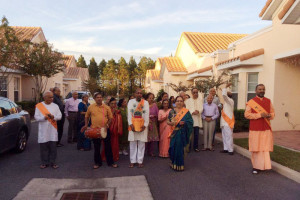 This past week the City Council of Seattle voted to ban discrimination based on caste. This references the hierarchical social division in South Asia which places some castes, such as Brahmins higher than lower-ranked castes, particularly Dalits (formerly called “Untouchables”). As Seattle is not located in Asia, but in the US state of Washington, this action might appear surprising. There are, however, a large number of South Asians in Seattle, many drawn to the city to work for tech companies such as Microsoft, which are located there. In India, discrimination based on caste still exists despite being officially banned. The ordinance from the City Council is designed not to prevent discrimination against Indians or South Asians in general (that’s already illegal) but targets discrimination within the immigrant community. There have been several legal cases in recent years from Dalits who allege unfair treatment in employment. The public radio program The World did an illuminating series on caste in America.
This past week the City Council of Seattle voted to ban discrimination based on caste. This references the hierarchical social division in South Asia which places some castes, such as Brahmins higher than lower-ranked castes, particularly Dalits (formerly called “Untouchables”). As Seattle is not located in Asia, but in the US state of Washington, this action might appear surprising. There are, however, a large number of South Asians in Seattle, many drawn to the city to work for tech companies such as Microsoft, which are located there. In India, discrimination based on caste still exists despite being officially banned. The ordinance from the City Council is designed not to prevent discrimination against Indians or South Asians in general (that’s already illegal) but targets discrimination within the immigrant community. There have been several legal cases in recent years from Dalits who allege unfair treatment in employment. The public radio program The World did an illuminating series on caste in America.
Many in the US are likely to be unaware of caste distinctions and probably would not be able to tell what caste someone belongs to. How do Indians themselves tell? An Interview recently on the World with Yashica Dutt, the author of “Coming out as a Dalit” pointed to the different ways that Indians can determine what caste a person belongs to. The first is the person’s name, which can reveal information such as the region of India your family is from, your native language, and your religion – all information that points to caste identity. An online Indian name decoder provides such data based on family names. If the name is not revelatory, according to Dutt, the person might be asked where they are from and whether they are a vegetarian (Brahmins are). Additionally, someone’s clothes may be an indicator, especially if they are wearing the “sacred thread” (an indication that one has passed through a Hindu rite of passage). Another interesting tell for South Asian professionals she mentioned is to find out what a person’s rank was in engineering or medical college in India.
For foreigners the caste system may be invisible but for South Asians it is quite real and can have real consequences on how one is treated by others. In that way it is a bit reminiscent of colorism in societies where there tends to be mixed populations of dark and light-skinned people. That includes Brazil, South Africa, the United States, where often darker-skin people are discriminated against.







